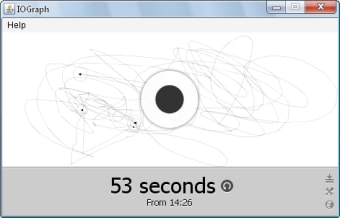

- WHERE DOES IOGRAPH INSTALL MAC OS
- WHERE DOES IOGRAPH INSTALL SOFTWARE
- WHERE DOES IOGRAPH INSTALL WINDOWS 7

You could search this site specifically for some information, if you don't want to read a book from cover to cover.
WHERE DOES IOGRAPH INSTALL MAC OS
This site has tons of information about Mac OS X, and quite a few users who are regulars on Mac-related topics. backups, in their "Taking Control" series. TidBITS offers ebooks on select topics, e.g. Just check out Amazon and read a few reviews. Use LightSwitchX or Witch if you don't like this.įor general information about using your new Mac, you can start by reading Mac 101 from Apple. That's why the application switcher only displays applications, not documents. Why should an editor or authoring tool that takes several seconds to launch quit, because you want to work on another document and you close the previous one?ĭocuments and applications are separate in Mac OS X: Any application runs only once (there are workarounds, such as the open command-line program), and each instance supports multiple documents.why should a Mail application quit when you don't want to view it, but it can notify you about incoming mail?.Some applications quit when you close their last window, but it doesn't always make sense: Alternatively, pressing Cmd-Option-Escape opens the Force Quit Applications window, where you also can quit frozen applications. Alternatively, you can quit applications by right-clicking or click-and-holding their Dock icon until a menu appears.įrozen applications can be terminated in the same Dock menu by pressing Option and selecting the Force Quit menu item that appears. You can even quit them from the application switcher you get by pressing Cmd-Tab: Keep Cmd down to keep the switcher open, and press q - the selected app will attempt to quit. You can quit any application by pressing Cmd-Q or selecting Quit in its application menu (the menu opened by clicking the application name in the menu bar). There are other applications available, such as Overflow that attempt to help you launch applications.Ī popular alternative is to use an application launcher like Quicksilver, Launchbar, or Alfred for launching applications. You can also drag them to the Finder sidebar, to launch them from there, or to the Finder toolbar. The Dock displays both "pinned" and running applications, so dragging running applications off the Dock does not have an effect immediately. Drag them off the Dock again to remove them.
WHERE DOES IOGRAPH INSTALL WINDOWS 7
You can dran applications to the Dock to keep them there (similar to pinning in Windows 7 task bar). Check the Finder's Go menu for keyboard shortcuts there. They are located in /Applications or one of its subdirectories. You launch/open applications by double-clicking them, or using open -a ApplicationName in the Terminal. You usually recognize them by their icon. Witch mentioned further below) are actually preference panes (extensions to the System Preferences application), or widgets for your Dashboard. I had several hundred applications installed and uninstalled during that time period, and can't complain about speed. I created my user profile back in 2005, moved it across three machines, and it still runs quite well. Otherwise, I wouldn't care much about that. See the bottom of my answer regarding information what is stored where in your library folder, or this answer regarding a completely different topic, but might be helpful anyway. Some applications dump quite a bit of data in your ~/Library (especially Application Support) but there are solutions once disk space is tight. There's no "registry" to keep clean, and the tiny personal preferences files don't hurt. You can just delete the application bundle in /Applications or ~/Applications` and be done.
WHERE DOES IOGRAPH INSTALL SOFTWARE
Uninstallation of software not installed using Mac App Store or one of the package managers is an "unsolved problem". It includes auto-update functionality, and very many applications are also available on there. Since a few days ago, there's also the Mac App Store, a concept that debuted on iPhone and iPad. Which you use (or even none at all, if there's no need) is up to you. Open source, Linux and UNIX related applications are available via one of the unofficial package managers Fink, MacPorts and Homebrew. Adium) relate to in their disk image design: This is what quite a few applications (e.g. Applications or ~/Applications) and that's it. You "install" application bundles by copying them to a convenient location (e.g.

Applications are usually installed to /Applications. You start installers by double-clicking, then follow the steps you're presented. You double-click them, they get mounted ("inserted"), and you can view their contents.Īpplications either are distributed as an installer (very few, mostly big name software from Apple, Adobe, or system-related software such as VMware Fusion), or directly as application bundles. Dmg files are disk images, like a downloadable thumb drive or CD.


 0 kommentar(er)
0 kommentar(er)
